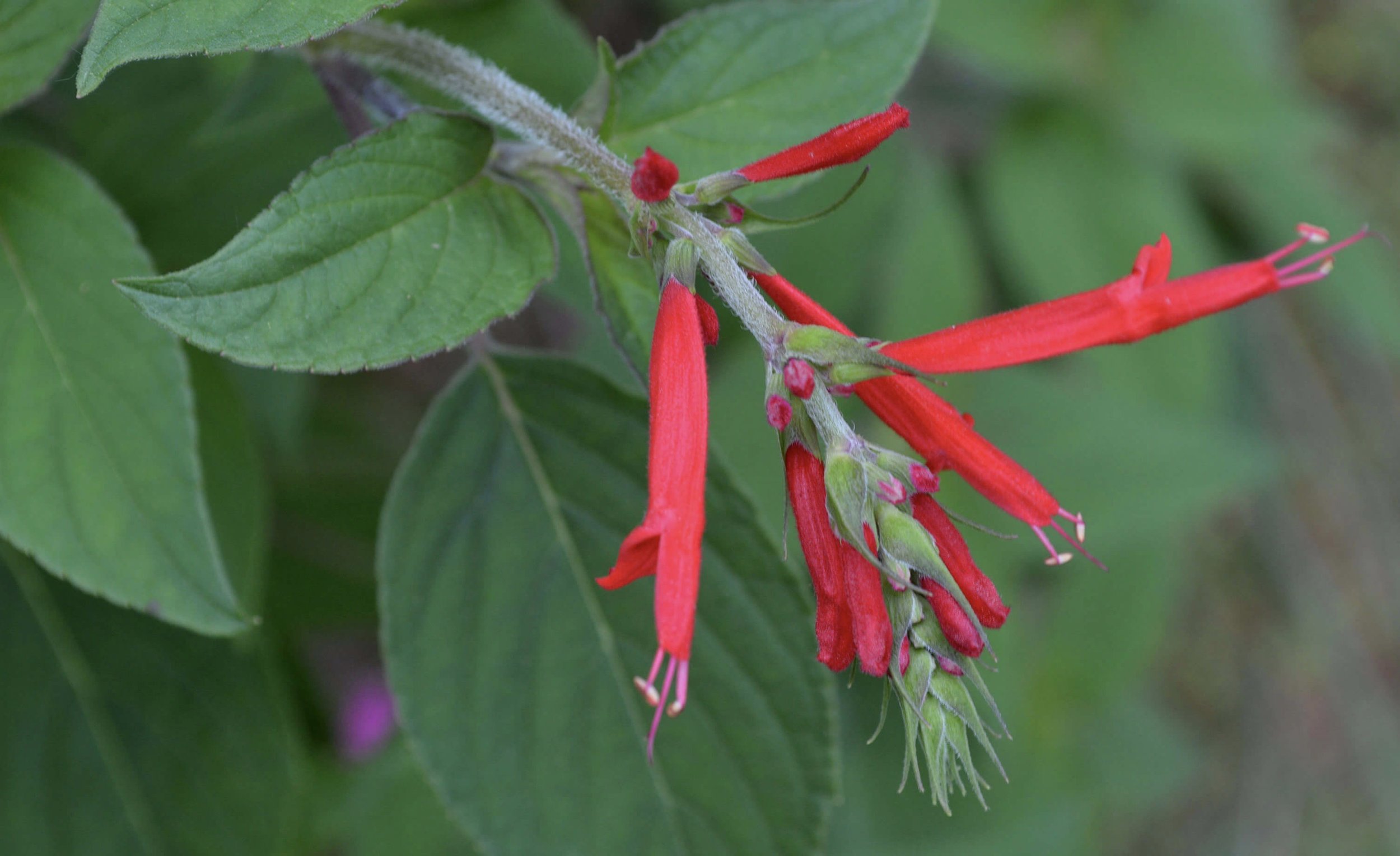Pineapple Sage Tea + Tincture - Autumnal Delights
(Salvia Elegans) Is pumping right now (Autumn) & buzzing with bees. Honey bees, bumble bees, other beneficial insects, this plant is a bee magnet in the garden.
Pineapple Sage is one of the first plants I've planted in every garden I've had. I take a cutting from my old house & pop it straight into the ground at the new garden, it's ridiculously easy to strike from a cutting (like all of the sage (salvia) family). I prune it back low after flowering and each year it bushes out bigger than before. The flowers go nuts in autumn/winter brightening up the garden with it's extremely bright red flowers and providing amazing bee food through Autumn & Winter.
If you’re planting just one plant for attracting beneficial insects during the cooler months + brightening the garden + providing hours of entertainment for kids, this could be it!
Not only is Pineapple Sage good for the garden, it's also lovely in a medicinal tea. Pineapple sage is rich in vitamin K, A, C, & B6. It also contains manganese, dietary fiber, potassium, folate & the red flowers are a rich source of antioxidants.
Pineapple Sage truly smells like pineapple - it is so delicious!
But it is far more than a delicious smelling and tasting plant, it’s rich in antioxidants & also used as a traditional herbal remedy.
It contains many of the same clarifying, digestive and immune-boosting qualities as standard Sage, yet also contributes a calming, cooling element to a remedy. It is sweet and relaxing in nature, with adaptogenic properties that help reduce stress and anxiety and balance the nervous system.
Lowers blood pressure
Relieves mental fatigue
Reduces anxiety and stress
Relieves constipation
Promotes digestion & relieves heartburn
Soothes gastritis, acidity and burning sensations
General tonic
Pineapple Sage is also rich in caffeic acid - a powerful antioxidant and anti-inflammatory which is great for your skin!
Other Traditional uses include:
To treat snake bites, infection, eye problems, epilepsy, memory loss, intoxication, intestinal problems and worms.
In ancient Greece, it is also used as an aphrodisiac. Ohh errr!!
You can dry Pineapple sage and use it for tea - or make a tincture out of it and use it as drops when you need it.
We love adding Pineapple Sage tincture to a relaxing, sleepy-time tincture mix.
It's native to Mexico where it's traditionally used for anxiety, depression & mental fatigue. It’s also been used historically to combat insomnia, lower blood pressure, and treat anxiety and nervous system disorders.
I finely slice the leaves into a mixed wild salad, including fruit salads, add leaves to herbal teas & baking, and use the flowers for decoration in salads & baking. You could experiment adding it to cocktails, infusions, syrups, jams, jellies, marinades and sauces – it has a very unique and lovely scent & flavor profile.
Don't be fooled by the name, it doesn't taste like Purple or White Sage at all, and yes, it does have a slight pineapple scent, especially when you rub it between your fingers, which is where the common name ‘Pineapple’ comes from.
Adapted and paraphrased from Homegrown Botanica and Kailash Herbs

